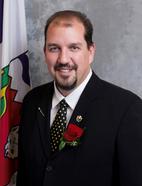Thank you, Mr. Speaker. In continuing my daily ritual of evaluating the performance of the McLeod government, today I want to reference my tabled document of Tuesday, September 29, 2015, and spend some time on our revenue concerns, both federal and own source.
By all accounts, our GNWT revenue grew by 149.79 percent from 2000 to today, and was substantially more than operation spending growth of 115 percent during the same period. However, with federal transfers currently accounting for more than 70 percent of GNWT revenue, and with only modest NWT population growth over these 15 years, we should be concerned of what current negative trend in population growth truly means. In fact, it is in the 2015-16 year where we see the single largest negative revenue growth of minus 1.01 percent, and if you put this side by side with our operational spending at 2.15 percent, you can clearly see this is not a balanced budget process, as it’s been portrayed, but a true deficit process.
While we are told and soothed when we have an operational surplus, it is important to note that this is not entirely true, as this book adjustment surplus is already spent in our capital budget process.
The second source of our revenue is through own- source revenue, and this revenue grew by 143.2 percent from
2000 to 2016 or ’15, far more than the
inflation but less than total revenue. Our own- source revenue is more variable than federal transfers due to the volatility and the forecasting of our corporate taxes collected. We would all agree that increasing own-source revenue through taxes would likely increase the cost of living, and it is
worthy to note that corporate and personal income taxes in the NWT are among the lowest in Canada.
To pass praise where praise is due, the January 2015 Fraser Institute graded
Canada’s Premiers
based on corporate and personal income taxes or changes in tax rates. Now, although not specifically mentioned in this Fraser Report, Premier McLeod would place, and as I’m saying, the best in the country, first place on corporate taxes and second place on personal income taxes, and by these measures Premier McLeod would have been second overall of all the Premiers in Canada, behind Alberta.
At this time, Mr. Speaker, I seek unanimous consent to conclude my statement.
---Unanimous consent granted
